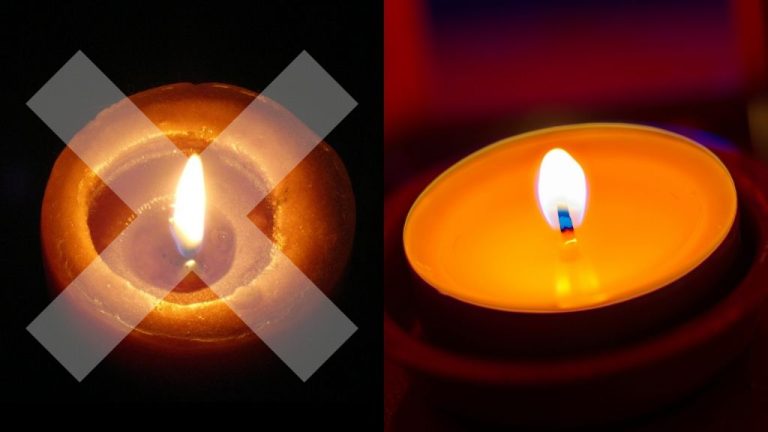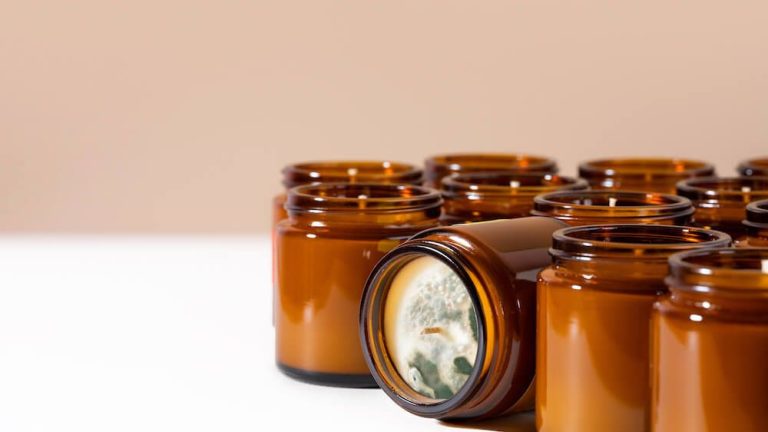How Do You Make A Wax Burn Go Away?
What Causes Wax Burns
Wax burns are caused when hot wax bonds to the skin. This often happens when the wax is too hot or left on the skin for too long [1]. The main causes of wax burns include:
– Hot wax bonding to skin – Wax needs to be at the right temperature to effectively remove hair without burning. If wax is too hot when applied to the skin, it can cause burns and skin damage.
– Wax that is too hot – Heating wax to the proper temperature is crucial. Wax that becomes overheated can severely burn the skin upon application.
– Letting wax sit on skin too long – Wax hardens and contracts when cooling on the skin. If left for too long, the contracting wax can pull at and injure the skin, leading to burns.
Identifying Wax Burns
A wax burn occurs when the hot wax used for hair removal is applied too hot or left on the skin for too long, damaging the top layers of skin. Identifying a wax burn is important so you can properly care for the affected area. Some common signs of a wax burn include:
– Red, irritated skin. This is often one of the first signs of a wax burn, as the skin becomes inflamed from the heat exposure. The redness may appear in patches or cover a larger area where the wax made contact.
– Pain/tenderness. Wax burns are painful, especially when touched. There may be a throbbing or stinging sensation as the nerves in the damaged skin tissue react and become sensitized.
– Potential blistering. In more severe cases, wax burns can lead to blisters forming on the skin’s surface. Blisters signal deeper tissue damage from the waxing process.
Other possible signs include swelling, peeling skin, scabbing, and discoloration. The severity depends on factors like the temperature of the wax, length of exposure, and sensitivity of the waxed area. Pay attention to any unusual skin changes after waxing and check for the above symptoms to identify if a wax burn occurred.
Treating Mild Wax Burns
For mild wax burns that affect only the top layers of skin, there are several at-home treatment options that can provide relief and promote healing. Applying a cool compress is an effective way to soothe pain and inflammation. Wrap an ice pack or a cool, wet cloth over the affected area for 10-20 minutes several times a day. The cold temperature helps constrict blood vessels and reduce swelling (source).

Aloe vera gel is another excellent home remedy for wax burns. Aloe contains soothing compounds that ease pain and inflammation. It also promotes skin healing and prevents infection (source). Gently apply pure aloe vera gel to the burn 2-3 times per day. Make sure to use a product with few added ingredients.
Over-the-counter pain medications like acetaminophen or ibuprofen can further reduce discomfort from mild wax burns. Follow dosage instructions on the label or consult your doctor (source). Use oral medication along with topical aloe vera gel and cool compresses for optimal relief.
Treating Severe Wax Burns
Severe wax burns that cause blistering, swelling, or deep tissue damage should be seen by a doctor as soon as possible. According to Healthline, severe burns can result in scarring if not properly treated. Seeing a doctor ensures proper wound care and prevents infection.
Doctors can prescribe medications to aid healing and prevent infection for serious wax burns. Antibiotic ointments such as bacitracin or Neosporin can help prevent infection. Oral antibiotics may be prescribed for more severe infections. Pain medication may also be prescribed to manage pain while the burn heals.
It’s important to keep the wound clean while it heals. The area should be gently washed with mild soap and water once a day, according to Cambridge Laser Clinic. Apply antibiotic ointment and change dressings regularly as directed by your doctor. Avoid re-waxing over the affected area until it has fully healed.
Preventing Wax Burns
There are a few simple steps you can take to help prevent painful wax burns during hair removal:
Test the temperature of the wax before applying it to your skin. According to experts, wax should be between 130-140°F to avoid burns. Carefully check the temperature by applying a small dot of wax on your wrist first. If it’s too hot, allow the wax to cool slightly before use.
Avoid overheating wax during the preparation process. Heating wax to the proper temperature is important, but overheating beyond the recommended range increases the risks of burns. Refer to your wax kit instructions and use a thermometer if needed.
Use proper wax application techniques. Apply wax in the direction of hair growth and spread it evenly in a thin layer. Don’t allow wax to pool or clump in any areas. Hold skin taut around the area you are waxing. Follow up by quickly removing strips in the opposite direction of hair growth.
Take care when waxing sensitive areas like the face, underarms, and bikini region. Be extra diligent about proper technique and ideal wax temperature in these zones.
Avoid waxing over the same area repeatedly or going over areas where wax residue remains. This can cause irritation and increase burn risks.
Allow time between waxing sessions for your skin to recover. Follow aftercare steps like applying aloe vera gel to soothe skin.
If you have any doubts, consult a licensed professional for guidance on safety and proper technique.
With some awareness and care, you can remove hair successfully using wax while avoiding any painful burns in the process.
Home Remedies for Wax Burns
There are several home remedies that can help soothe wax burn pain and promote healing. Some readily available ingredients like cold water, ice, honey, and oatmeal can provide relief when applied to mild wax burns.
Placing the wax burned area under cold running water for 10-15 minutes helps reduce inflammation and prevents the burn from worsening. The cold temperature helps numb the pain. According to Healthline, cold water should be the first step when treating a wax burn [1].
Applying an ice pack or cold compress to the wax burned skin also helps alleviate pain and swelling. The cold temperature constricts blood vessels, reducing blood flow to the area. Be sure to wrap the ice in a towel before applying to prevent cold damage. Keep it on for 10-20 minutes at a time. As Skn Clinics notes, ice packs can be especially helpful for burns on the face [2].
Raw honey has natural antibacterial and anti-inflammatory properties that can aid healing of mild wax burns. It helps moisturize the skin and forms a protective barrier. According to research, honey can even promote the growth of new skin tissue. Apply a thin layer of raw, unprocessed honey to the affected area and cover with a bandage [1].
Colloidal oatmeal relieves itching and irritation caused by wax burns thanks to its antioxidant and anti-inflammatory properties. Cambridge Laser Clinic recommends making an oatmeal paste by mixing oats with a bit of water, applying it to the burn, and rinsing off after 10-15 minutes [3]. An oatmeal bath can also provide relief.
When to See a Doctor
While most waxing burns are mild and heal on their own, you may need to see a doctor in certain situations:
If the burn covers a large area of your skin, it is best to have a medical professional assess the severity. Large burns can lead to increased risk of infection and may require special treatment like antibiotics or wound care.
Signs of an infection include increasing pain, swelling, redness, warmth at the site, red streaks, pus or foul-smelling discharge. Infections require prescription antibiotic treatment. See your doctor right away if you notice any of these symptoms.
Burning pain that persists for more than a couple days or seems to be getting worse warrants a trip to the doctor. While waxing discomfort is normal at first, ongoing intense pain could indicate a more serious issue needing medical care.
It’s also a good idea to consult your doctor if you have any concerns about proper healing or scarring. They can provide tips on scar prevention and identify any problems early.
In addition, see your doctor if you experience a wax burn and have any medical conditions like diabetes that impair healing. Proper wound care is especially important.
Don’t hesitate to call your doctor for guidance if a wax burn seems severe or becomes worrisome. It’s better to be safe and have it checked out. With appropriate care, most waxing burns heal without incident.
Caring for a Healing Wax Burn
It’s important to properly care for a wax burn as it’s healing to avoid infection and minimize scarring. Here are some tips:
Keep the area clean. Gently wash the burn daily with mild soap and water, and pat dry. Be careful not to scrub or irritate the skin. According to Healthline, you can use antibiotic ointment for the first few days to prevent infection.
Avoid sun exposure. The new skin will be highly sensitive to UV rays, which can damage skin and cause darker pigmentation. Cover the area with clothing or use a high SPF sunscreen.
Use petroleum jelly. Apply a thin layer of petroleum jelly to keep the burn moisturized as it heals. Petroleum jelly helps prevent scabs and scarring. Reapply after washing. As Healthline notes, you can also use aloe vera gel to soothe the burn.
Watch for signs of infection and see a doctor if the burn worsens. Signs include increased pain, swelling, redness, odor or pus. Severe wax burns may require prescription antibiotic ointments and dressings.
Let the burn fully heal before waxing again. This may take up to 6 weeks. Be extra cautious next time and go to an experienced esthetician.
With proper wound care, most wax burns heal without major scarring. But patience is needed for the healing process. Avoid picking at scabs as this can lead to scarring.
Alternative Hair Removal Methods
For those looking to avoid waxing due to the potential for burns or other irritation, there are several alternative hair removal methods to consider.
Shaving
Shaving with a razor is one of the quickest and most accessible hair removal methods. It only takes off hair above the skin’s surface, so regrowth happens quickly, often within a few days. While shaving carries a lower risk of irritation compared to waxing, cuts, razor burn, and ingrown hairs are potential side effects (Source).
Depilatory Creams
Depilatory creams contain chemicals that work to dissolve hair near the skin’s surface. They are easy to apply and wash off after 5-10 minutes. Skin irritation and rashes can sometimes occur with use. Results last 1-3 days before regrowth starts (Source).
Laser Hair Removal
Laser hair removal uses concentrated pulses of light to destroy hair follicles and prevent regrowth. It requires multiple treatments but can offer semi-permanent hair reduction when done properly. Laser works best for those with light skin and dark hair. Side effects like redness and swelling are temporary (Source).
Summary
Wax burns are a common side effect of hair removal through waxing. They can range from mild redness and soreness to severe blistering and peeling of the skin. Wax that is too hot is the most common cause of wax burns. Failing to apply post-wax products or thoroughly cleaning the area after waxing can also lead to irritation and burns.
For mild wax burns, apply a cold compress, take an anti-inflammatory medication, and moisturize the area. More severe burns may require antibiotic ointment, hydrocortisone cream, and bandaging. Refrain from waxing until the burn has fully healed. To prevent wax burns, test wax temperature before applying, allow thick hair to grow in slightly before waxing, use proper waxing technique, and care for skin after waxing. Seek medical attention right away if you experience blistering, oozing, increase in pain or size of the burn.
While waxing carries risks like burning, there are alternatives like shaving, depilatory creams, epilation devices, and laser hair removal. With caution and care, waxing can be done safely. But it’s important to stop waxing and seek help if you experience a serious skin reaction.






